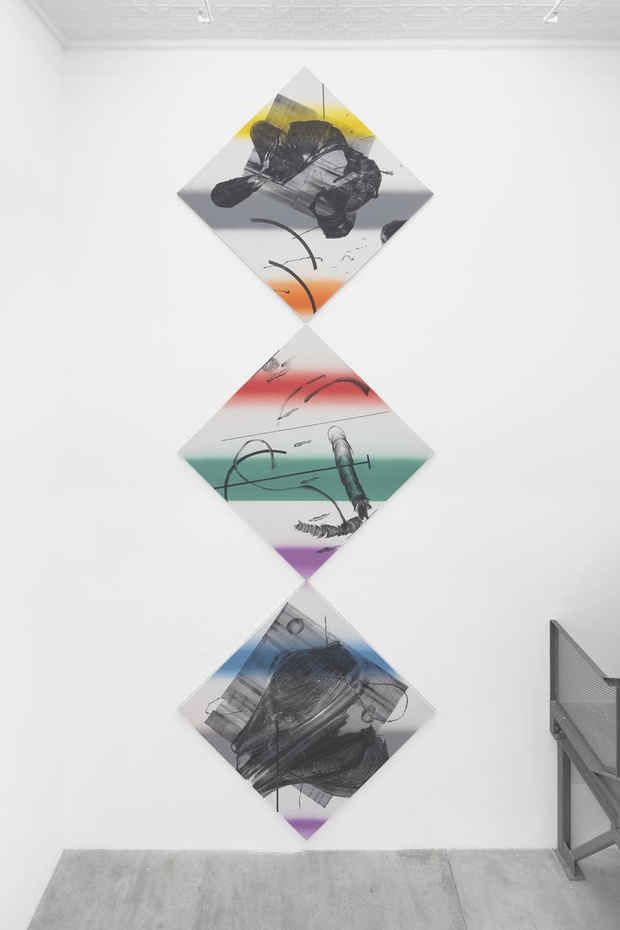Cheyney Thompson “Intervals and Displacements”
Andrew Kreps Gallery

This event has ended.
Andrew Kreps Gallery presents an expansive, dual-part exhibition by Cheyney Thompson staged across two venues, in collaboration with Lisson Gallery in New York. Presenting four distinct, ongoing bodies of painting and drawing, both exhibitions evince Thompson’s thoughtful practice, featuring the connective strands of control, combination, and constraint.
At Andrew Kreps Gallery, Thompson continues his Displacement series of paintings, each of which begins life as a homage to the standardized grid. After laying down this regimented ground, a series of custom-made silicon tools are employed to disrupt the still-wet, gridded surface and impose the abstracting, chaotic force of the artist’s interventions. Making drags and smears across the surfaces of these works, as though swiping a hand across a screen or tablet, Thompson rearranges the five-millimeter, pixelesque black squares into glitched, attenuated forms, stretching and bending the grid back through and beyond itself into three and perhaps four dimensions, if you allow for the passage of time through these spaces.
A transparent, x-ray quality is evident in these Displacement works, which are richly layered with spray-colored bands that mark a regular half-meter interval with irregular gradients. The lozenge supports, bisects, and measures the feature wall of the gallery, setting the basis for a repeating unit that fills and nearly exceeds the architectural container. Multiple measuring systems slip in and out of phase with one another, allowing the canvases to function as ‘displaced’ elements from a larger, nested set of determining structures.
Also exhibited at Andrew Kreps, are 13 new drawings in Thompson’s TouchTime series that feature elements of Houdon’s Ecorché, a skinless figure used in the teaching of anatomy. These drawings are executed using a custom-built touch-sensitive surface, where a microcomputer records exactly 10 seconds of contact time between implement and paper. By restricting his involvement to minutely recorded, and constrained bursts of transient mark-making – either long, slow lines, or rapid-fire, staccato stabs – Thompson can quantify his artistic labor and rationalize the production of knowledge. TouchTime relates to both this interactive limit to the drawings’ production and to the durational concept of Takt time that is used to organize work hours to meet demand in manufacturing. Far from the mechanical universal clock time that helped discipline the wage relation, the infinitesimally small unit of the compute cycle utilized in the TouchTime drawings allows for far more flexible, pervasive forms of capture.
Media
Schedule
from November 11, 2022 to January 06, 2023